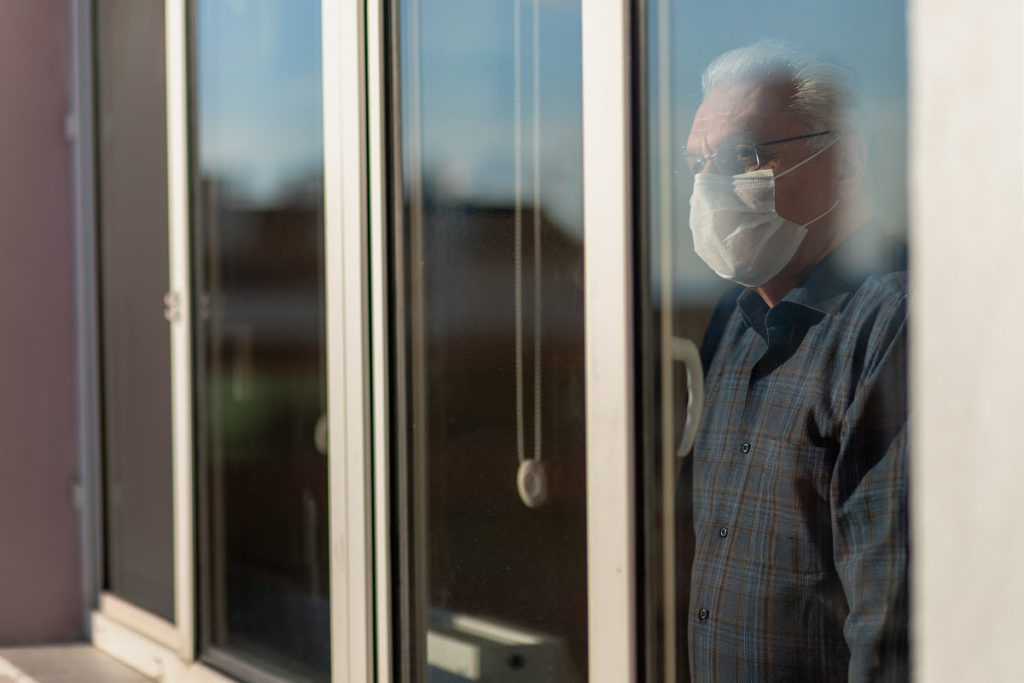Contributed by Ethan R. Kent, MSW, LCSW, LSCSW, CAGCS
Program Director | Senior Life Solutions @ Excelsior Springs Hospital
Today kicks off the last week of Suicide Prevention Month. We want to conclude the Suicide Prevention Month features with identifying risk factors and some immediate things you can do to help those in need.

Risk factors for increased suicide risk:
- Mental disorders, particularly mood disorders, schizophrenia, anxiety disorders, and certain personality disorders
- Alcohol and other substance use disorders
- Hopelessness
- Impulsive and/or aggressive tendencies
- History of trauma or abuse
- Major physical illnesses
- Previous suicide attempt(s)
- Family history of suicide
- Job or financial loss
- Loss of relationship(s)
- Easy access to lethal means
- Local clusters of suicide
- Lack of social support and sense of isolation
- Stigma associated with asking for help
- Lack of healthcare, especially mental health and substance abuse treatment
- Cultural and religious beliefs, such as the belief that suicide is a noble resolution of a personal dilemma
- Exposure to others who have died by suicide (in real life or via the media and Internet)
Warning signs of increased imminent risk:
- Talking about wanting to die or to kill themselves
- Looking for a way to kill themselves, like searching online or buying a gun
- Talking about feeling hopeless or having no reason to live
- Talking about feeling trapped or in unbearable pain
- Talking about being a burden to others
- Increasing the use of alcohol or drugs
- Acting anxious or agitated; behaving recklessly
- Sleeping too little or too much
- Withdrawing or isolating themselves
- Showing rage or talking about seeking revenge
- Extreme mood swings
If you know someone experiencing thoughts of suicide or one of the above risk factors here are some steps you can take to intervene.
- Tune-In
- Tuning in to the possibility of suicide can lead to help and safety rather than suicide.
- Paying attention and taking notice to what you hear, sense, feel, see and learn about.
- Take the time to follow your instincts.
- Notice when someone needs help and focus your attention on whether their thoughts and experiences could be about suicide.
- Ask About Suicide
- People thinking about suicide may not know how to ask for help.
- Once you have “tuned-in” and believe they may be experiencing thoughts of suicide, Ask CLEARLY, DIRECTLY, and CALMLY.
- Example: “You seem to be overwhelmed, are you thinking about suicide?”
- This question is clear and direct and cannot be mistaken for any other meaning.
- Remember: It is important to ASK about suicide in a way that is non-judgmental. Demonstrate that you want to hear the answer.
- Asking about suicide gives the person with thoughts of suicide permission to talk about their thoughts. It is possible that up until now, this person may have felt they could not talk about the pain they were in.
- State that Suicide is Serious
- Let the person know that you believe that suicidal thoughts are serious.
- Example: “You are thinking about suicide, that’s serious. Tell me more. What happened? When did this start.”
- Example: “Thank you for telling me that you are thinking about suicide. Having these thoughts is serious. When did you begin thinking about suicide? Let’s talk about it.”
- After asking about suicide, you may learn how suicidal thoughts came to be on their mind. You may also identify how or when they thought about suicide.
- Repeat back to them all you have heard them say about suicide.
- Stress the importance of connecting to help to be safe from suicide is important.
- Connect
- Connect the person to helping resources who possess the skills to support safety.
- Make the connection as soon as possible. Do not put this off!
- Do not leave a person with suicide thoughts alone.
- Getting help to ensure their safety demonstrates how seriously you take thoughts of suicide.
- Talk about and agree on a connection to a helping resource who know how to support safety from suicide.
- It is important to ask if there has already been any harm suicide action taken. If there were pills taken or any injury inflicted, emergency medical services or the police need to be contacted for immediate help.
These four steps won’t replace the treatment that will be needed to help the person with suicidal ideations recover, but they will increase the chance for the person to get the help they need.
Remember, Senior Life Solutions is Excelsior Springs Hospital’s program, designed to meet the unique needs of individuals typically 65 and older experiencing depression or anxiety related to life changes that are often associated with aging. If you or someone you know is struggling with a decline in your mental health, our program wants you to know we are here to help. Whether through our program, or another service, our team works to identify and address the emotional needs of those in our community and provide support.
If you need more information or education or would like to discuss support, please call 816-629-2629 or visit Senior Life Solutions – Excelsior Springs Hospital (eshospital.org).
